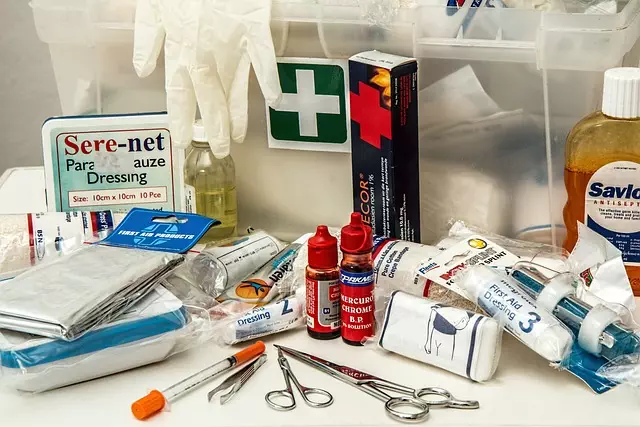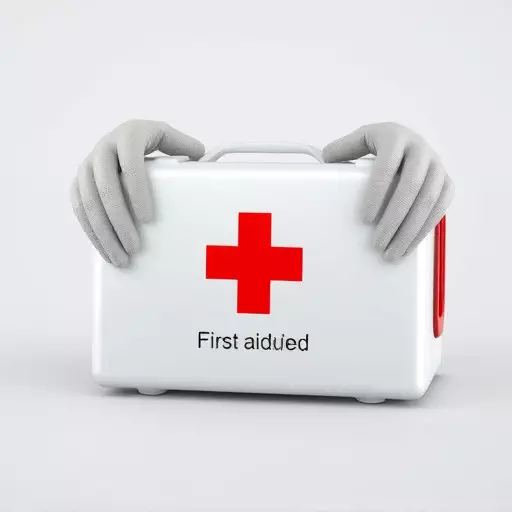Understanding various types of head injuries is crucial for those with first aid and CPR training, as it enables them to recognize symptoms like loss of consciousness or disorientation. Basic Life Support (BLS) training equips individuals to assess severity, control bleeding, check vital signs, initiate rescue breathing, and stabilize patients until professional help arrives – key aspects of first aid certification requirements. Prompt action following a head injury can significantly impact outcomes, making BLS training, regular refreshers, and adherence to certification requirements vital for effective emergency response.
“Head injuries can range from mild concussions to severe traumatic brain injuries (TBI), making it crucial to understand their types and severity. This comprehensive guide delves into the world of first aid for head injuries, equipping you with essential knowledge. From immediate response techniques to basic life support, we explore vital signs monitoring and stabilization methods. Learn about first aid certification requirements and benefits, as well as preventive safety measures. Master skills in first aid and CPR training to ensure you’re prepared to handle head injuries effectively.”
- Understanding Head Injuries: Types and Severity
- Immediate Response: What to Do After a Head Injury
- Basic Life Support for Head Injuries: Checking Vital Signs
- First Aid Training: Techniques for Stabilization and Treatment
- When to Call Emergency Services: Recognizing Serious Signs
- First Aid Certification: Requirements and Benefits
- Preventing Head Injuries: Safety Measures and Awareness
Understanding Head Injuries: Types and Severity
Head injuries can range from mild to severe and understanding their types is crucial for anyone with first aid and CPR training. The most common are concussion, characterized by a brief loss of consciousness or disorientation; and traumatic brain injury (TBI), caused by more intense trauma leading to potential long-term damage. Fractures, bleeding into the brain, and swelling can occur in severe cases, necessitating immediate medical attention. Basic life support training equips individuals with the skills to recognize these emergencies.
Knowing the severity is key to determining first aid certification requirements. While minor head injuries may only require rest and observation, more serious cases might demand emergency response. Individuals pursuing first aid certification should be prepared to assess symptoms, provide basic care, and recognize when advanced medical help is necessary—all vital aspects of first aid and CPR training.
Immediate Response: What to Do After a Head Injury
After a head injury, a swift and appropriate response can make all the difference in managing potential risks and ensuring optimal recovery. The immediate steps one takes can significantly impact the severity of secondary injuries or complications. If you or someone else experiences a head injury, it’s crucial to stay calm and follow these essential first aid guidelines.
Start by assessing the scene and the person’s condition. If there’s any bleeding, apply gentle pressure with a clean cloth. Do not remove any embedded objects, as this may cause further damage. Check for signs of unconsciousness, and if the individual is unresponsive, begin Basic Life Support (BLS) immediately, including rescue breathing and chest compressions. It’s vital to seek medical attention promptly, and while waiting for emergency services, keep the person still to avoid exacerbating the injury. Remember, first aid and CPR training, along with understanding basic life support certification requirements, empowers you to act swiftly in such critical situations.
Basic Life Support for Head Injuries: Checking Vital Signs
In the event of a head injury, prompt action can make a significant difference in the outcome. Basic Life Support (BLS) training, including CPR, is crucial for individuals equipped to handle such emergencies. The initial step involves checking vital signs – pulse, breathing, and level of consciousness. If the person is unconscious but breathing normally, perform rescue breathing every 2 breaths during chest compressions. For non-breathing victims, initiate CPR immediately.
First aid certification requirements vary by location, but understanding BLS techniques is a fundamental part of preparation. Regular refreshers are essential as well, since practices and guidelines can change over time. Those who undergo first aid and CPR training become better equipped to respond calmly and effectively in critical situations involving head injuries.
First Aid Training: Techniques for Stabilization and Treatment
First aid and CPR training is an essential component in managing head injuries effectively. This specialized training equips individuals with crucial skills to stabilize and provide initial treatment until professional medical help arrives. Participants learn techniques such as proper positioning, immobilization, and monitoring vital signs. Basic Life Support (BLS) training further enhances their ability to respond appropriately during critical situations.
Acquiring a first aid certification is often required for roles involving high-risk activities or caring for vulnerable populations. These certifications ensure individuals are equipped with up-to-date knowledge and skills, enabling them to handle head injuries and other medical emergencies confidently. Regular refresher courses are recommended to maintain proficiency in these life-saving techniques.
When to Call Emergency Services: Recognizing Serious Signs
In case of a head injury, especially if it’s severe or accompanied by other concerning symptoms, seeking immediate medical attention is paramount. Emergency services should be called right away if the injured person loses consciousness, exhibits signs of deteriorating mental status, experiences prolonged or severe headache, nausea or vomiting, or displays any indications of brain damage such as slurred speech, blurred vision, or muscle weakness on one side of the body. These could be indicators of a serious condition like a traumatic brain injury (TBI), which requires professional medical care and potentially life-saving interventions.
Basic Life Support (BLS) training, including first aid and CPR, equips individuals to recognize these critical signs and respond appropriately until advanced medical help arrives. First aid certification requirements vary by region but generally include proficiency in assessing and managing head injuries. BLS training teaches essential skills like checking for responsiveness, calling emergency services, controlling bleeding, and stabilizing the patient’s neck and spine. For those with more advanced first aid and CPR training, it’s crucial to know when to initiate rescue breathing if chest compressions are not needed or appropriate. Such training is obtainable through various reputable organizations offering courses tailored to different levels of proficiency, from basic to advanced life support.
First Aid Certification: Requirements and Benefits
First Aid Certification is a valuable skill that can make a significant difference in emergency situations. Many people consider taking this course to gain knowledge and confidence in handling critical situations, especially when it comes to head injuries. The benefits are clear; certified individuals can provide immediate assistance, potentially saving lives and reducing long-term impacts.
Obtaining first aid and CPR training, including basic life support (BLS), is a structured process with specific requirements. These courses are designed to equip participants with practical skills and knowledge. Students learn how to assess and manage various injuries, including head traumas, by following established protocols. Certification typically involves passing an exam that tests both theoretical understanding and hands-on proficiency in delivering first aid, ensuring individuals are prepared to react effectively in real-world scenarios.
Preventing Head Injuries: Safety Measures and Awareness
Preventing head injuries is a crucial aspect of first aid and CPR training. By understanding common causes and implementing safety measures, individuals can significantly reduce the risk of such injuries. Basic Life Support (BLS) training emphasizes the importance of staying alert and aware in potentially hazardous situations. This includes recognizing high-risk activities and environments that may increase the likelihood of head traumas.
For instance, wearing properly fitted protective gear during sports or construction work is essential. Additionally, promoting safety awareness among children involves teaching them to avoid dangerous play and to report any accidents promptly. Adhering to traffic rules, using seatbelts in vehicles, and ensuring stable environments for the elderly are further measures that can prevent head injuries. Obtaining first aid certification requirements, which often include specialized training in managing head traumas, empowers individuals to act swiftly and effectively when an accident occurs.


